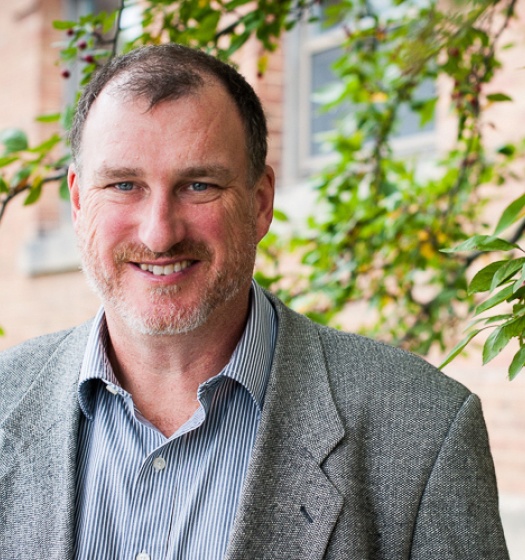Extreme weather and natural disasters are part of life on earth. And they can have a devastating impact on its inhabitants. Just ask the dinosaurs.
Among scientists, there is a growing consensus that the increased occurrence and severity of weather events like heat waves, forest fires, storms and floods are proof positive that the earth’s climate is changing.
“Taken in isolation, the unusual weather activities we have been seeing have occurred in the past. But the fact that they are happening together and with much more frequency and intensity is alarming,” says Frédéric Fabry, Director of the Bieler School of Environment and an Associate Professor in the Department of Atmospheric and Oceanic Sciences.
“What we have been experiencing is a wake-up call. At this point, the only people who don’t believe in climate change are the ones who don’t want to believe it.”
Cold facts about a warming climate
Scientists have long understood how greenhouse gases like carbon dioxide and methane cause global warming. “Although they make up just a small fraction of the atmosphere, these gases have a disproportionate impact on climate by trapping some of the planet’s heat before it escapes into space,” says Fabry. “The warming atmosphere causes changes in weather patterns and climate in different regions of the earth, and this creates more extreme weather occurrences.”
The situation is especially dire for the planet’s northern regions, including Canada, which are warming at more than twice the global rate. More alarming still is the fact that Arctic regions are warming even faster. The journal Nature reports that, since 1979, the Arctic has been warming nearly four times faster than the rest of the planet.
Now, motivated by their strong belief in the capabilities of McGill’s researchers to find workable solutions to these serious issues, McGill graduates Marc and Marie Bieler have made a philanthropic gift to establish the Bieler Chair in Northern Climate Change and Sustainability that will energize climate change and environmental research taking place in the Faculty of Agricultural and Environmental Sciences and across the University.
This builds on a landmark donation the family made in 2020 to strengthen McGill’s interdisciplinary teaching, research and experiential learning capacity in environmental sciences through the since renamed Bieler School of Environment.
“I ask myself: what I can do to help the world and the predicament that it’s in right now,” says Marc Bieler, DipAgr’58, BA’64, whose successful career as an agri-food entrepreneur has led some to refer to him as Canada’s “cranberry king”.
“My wife and I have children who are in their twenties. They must be worried about what’s going to happen 20 years down the line, because if present trends continue, it’s going to be disastrous.”
The planet’s refrigerator
To understand why the Arctic is warming so much faster than the rest of the planet, and remains so critical to the unraveling complexities of climate change, Fabry says that one must consider the role of sea ice, which acts like the planet’s refrigerator. At some points during the year, sea ice covers an average of 25 million square kilometres of our planet’s surface – an area about two and a half times the size of Canada.
“Snow-covered ice reflects 80 per cent of the sun’s radiation, which helps to maintain a steady temperature,” he says. “But open water absorbs 80 to 90 per cent of it. The warmer the air becomes, the more ice melts, which means there is more open water to trap more heat. A vicious cycle – which scientists refer to as a ‘positive feedback loop’ – is created, which accelerates warming.”
Bieler Chair
Jointly appointed to the Bieler School of Environment and the Department of Natural Resource Sciences, the Bieler Chair will confront the challenges of a warming North by consolidating environment-related research and teaching across a broad range of areas at McGill, including wildlife and fisheries biology, forest and landscape ecology, entomology, microbiology, soil science, ecotoxicology, sustainability science, and even economics and natural resource policy.

Brian Driscoll
“Given McGill’s already broad research emphasis on the North, the new Chair will find a welcoming and collaborative home,” says Brian Driscoll, Chair of the Department of Natural Resource Sciences and Associate Professor of Microbiology.
Driscoll shares Bieler’s sense of urgency. “Humanity must understand that what happens in the North doesn’t stay in the North. How we address and adapt to our changing climate in the next few years will have an impact on a global scale.”
Of deep concern to Driscoll is the devastating impact of a changing climate on the North’s Indigenous residents, whose existence is tied to traditions of hunting and fishing. “Communities across Northern Canada have a deep connection to the land. Climate change is a pervasive threat to their livelihoods, culture, social relations, food security, and health.”
Longstanding commitment to Northern research
McGill has a longstanding commitment to conducting research in the North. “For the past 25 years, the Department of Natural Resource Sciences has focused its research activities on the North,” says Driscoll. “Our scientists are exploring the region from diverse perspectives – from microscopic organisms in the permafrost, to uniquely adapted insects and sea birds, right up to polar bears.”
Many of these research projects are based out of the McGill Arctic Research Station. Established in 1960, it is one of the longest-operating seasonal field research facilities in Canada’s High Arctic.
Located in Nunavut and surrounded by mountains and glaciers, the station serves as a resource not only for McGill scientists, but also for those from other universities, NASA, the Polar Continental Shelf Project, the Geological Survey of Canada and the Canadian Museum of Nature. Some of the most detailed environmental information on the Arctic, including topographic map data, has been collected here.
The Arctic is changing – fast
Life in the Arctic exists in a delicate balance. Even a small increase in temperature can have an enormous impact on a fragile ecosystem that provides a habitat for species found nowhere else on earth.
For the past two decades, Professor Lyle Whyte, Canada Research Chair (Tier 1) in Polar Microbiology, has examined the smallest of these creatures: microorganisms that exist at sub-zero temperatures in the permafrost and unique cold saline springs.

Lyle Whyte
“Cryomicrobiology – the exploration of the low-temperature limits of microbial life – is presently not well understood. But knowing if and how these communities are active in polar ecosystems is crucial for determining their impact on global biogeochemical cycling and how they will respond to a rapidly warming environment,” he says.
The problem with permafrost
One of the pivotal elements of the Arctic’s vulnerable ecosystem is permafrost, a (now not so) permanently frozen soil layer containing high levels of organic material that microbes consume. As warming temperatures cause the permafrost to melt, compounds stored in this organic matter are released into the atmosphere. These include the greenhouse gases carbon dioxide and methane, which warm the atmosphere and further accelerate permafrost thaw.
“Methane traps much more heat in the atmosphere than carbon dioxide,” explains Whyte. His research has uncovered one piece of positive news: “In the High Arctic regions specialized bacteria inhabiting the permafrost are consuming methane as an energy source. Unfortunately, this is not the case in Arctic areas further south, where methane is being released into the atmosphere.”
A warmer Arctic brings other environmental threats. Tundra wildfires are now more common, spewing carbon dioxide into the air. By thawing soils and unlocking nutrients for microbes to digest, these fires also prompt the release of even more greenhouse gases.
And then there are the threats posed by one of the planet’s most damaging invasive species: humans. As polar ice is replaced by open ocean, cruise ships, oil tankers and fishing vessels will criss-cross Arctic waters, increasing the potential for oil spills, damaging marine noise and the risk of collisions with marine animals.
Finding workable solutions
While the challenges facing the North are daunting, Driscoll is optimistic. “As researchers, we cannot resign ourselves to the worst-case scenario. We are driven to achieve a best-case scenario – one that is ultimately good for our planet and for all those who depend on it. With the expertise and leadership of the Bieler Chair, we will marshal our considerable strengths and move forward with efforts to train the next generation of environmental change-makers.”

